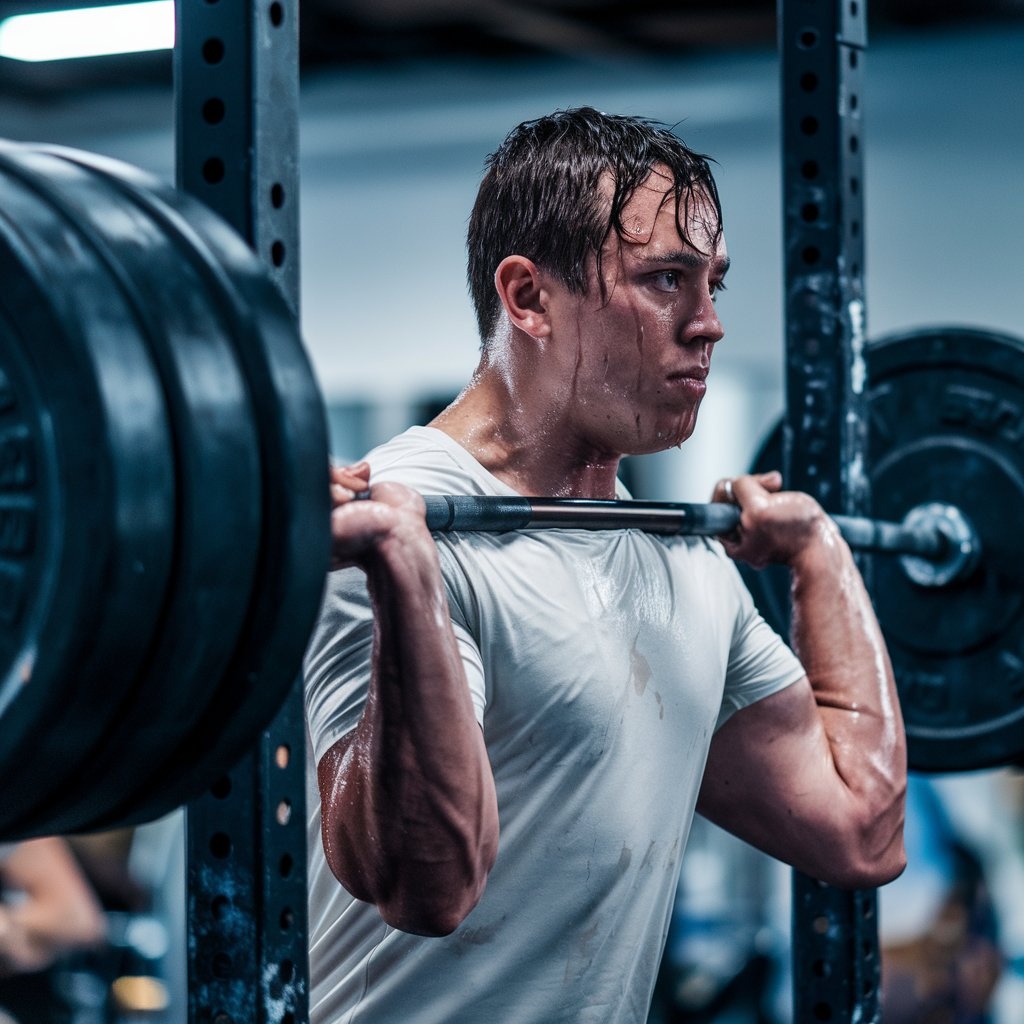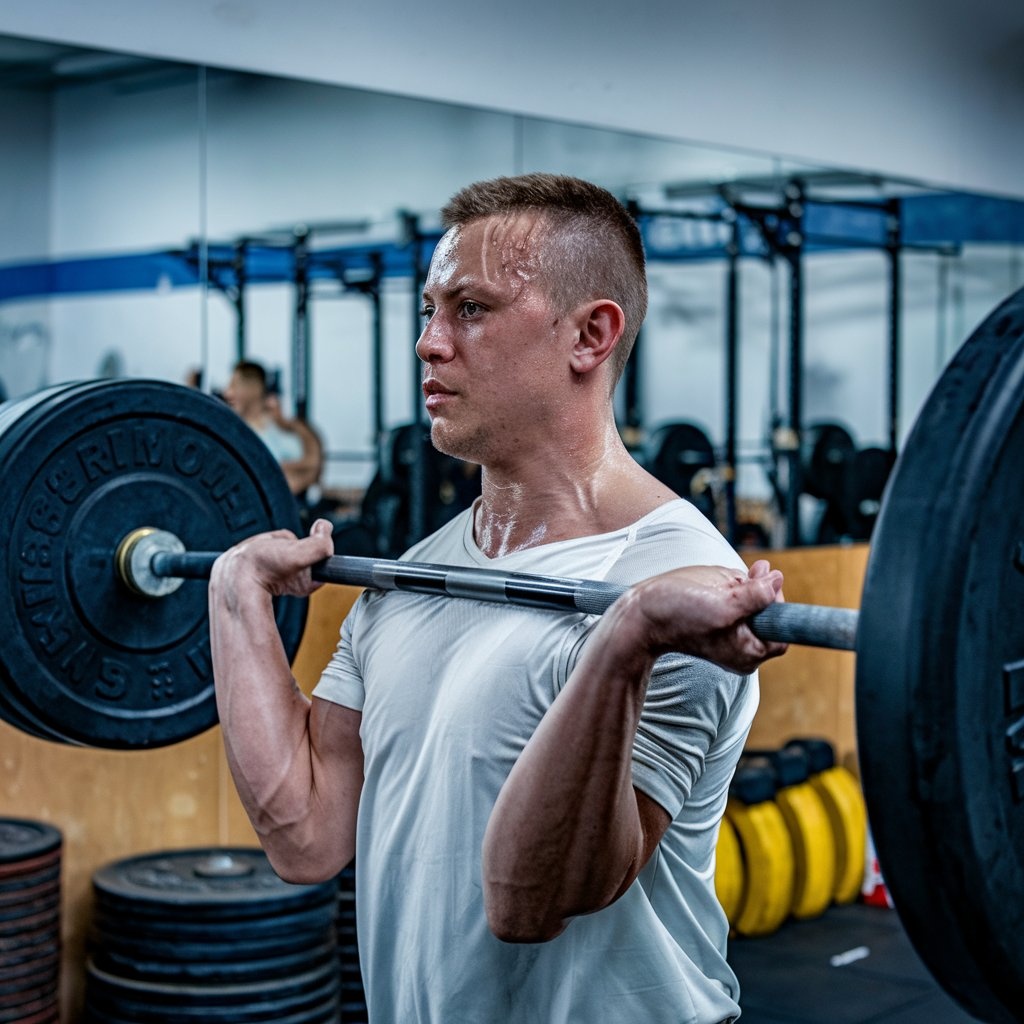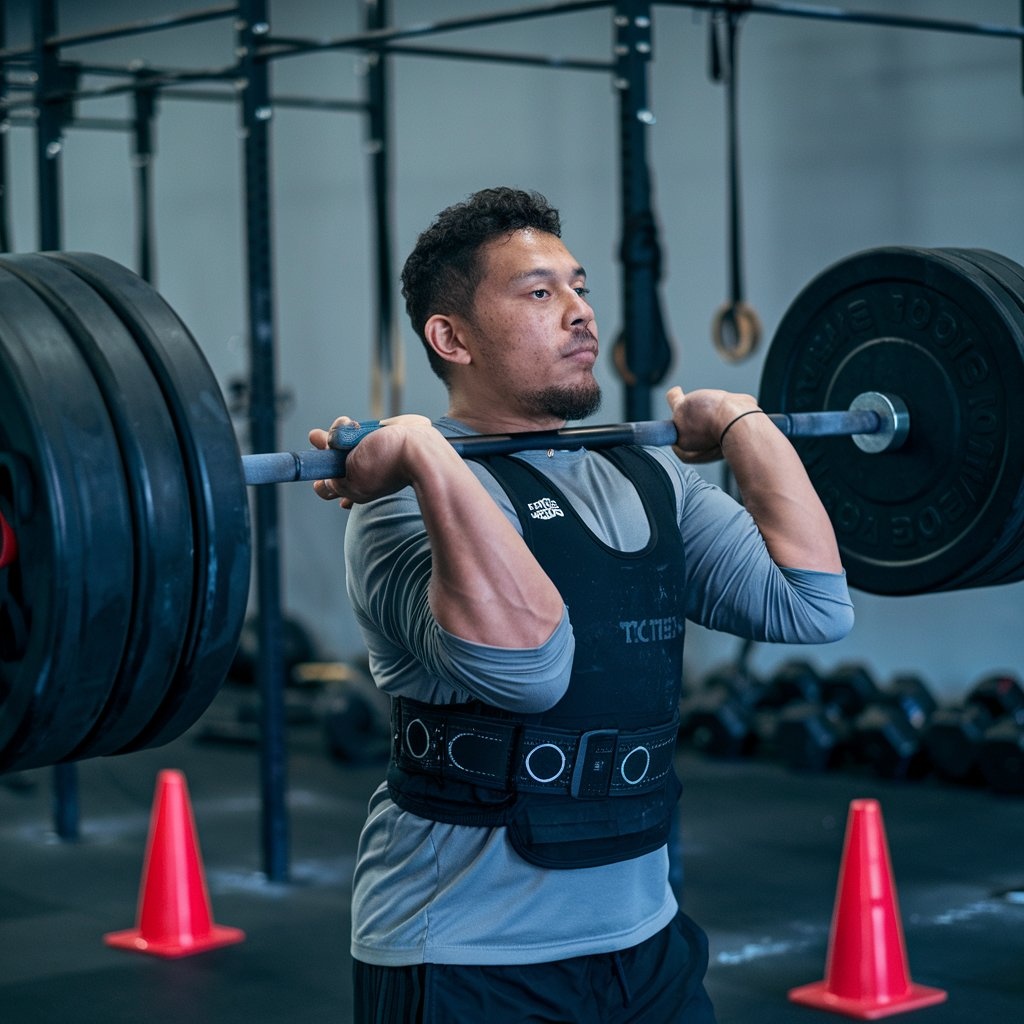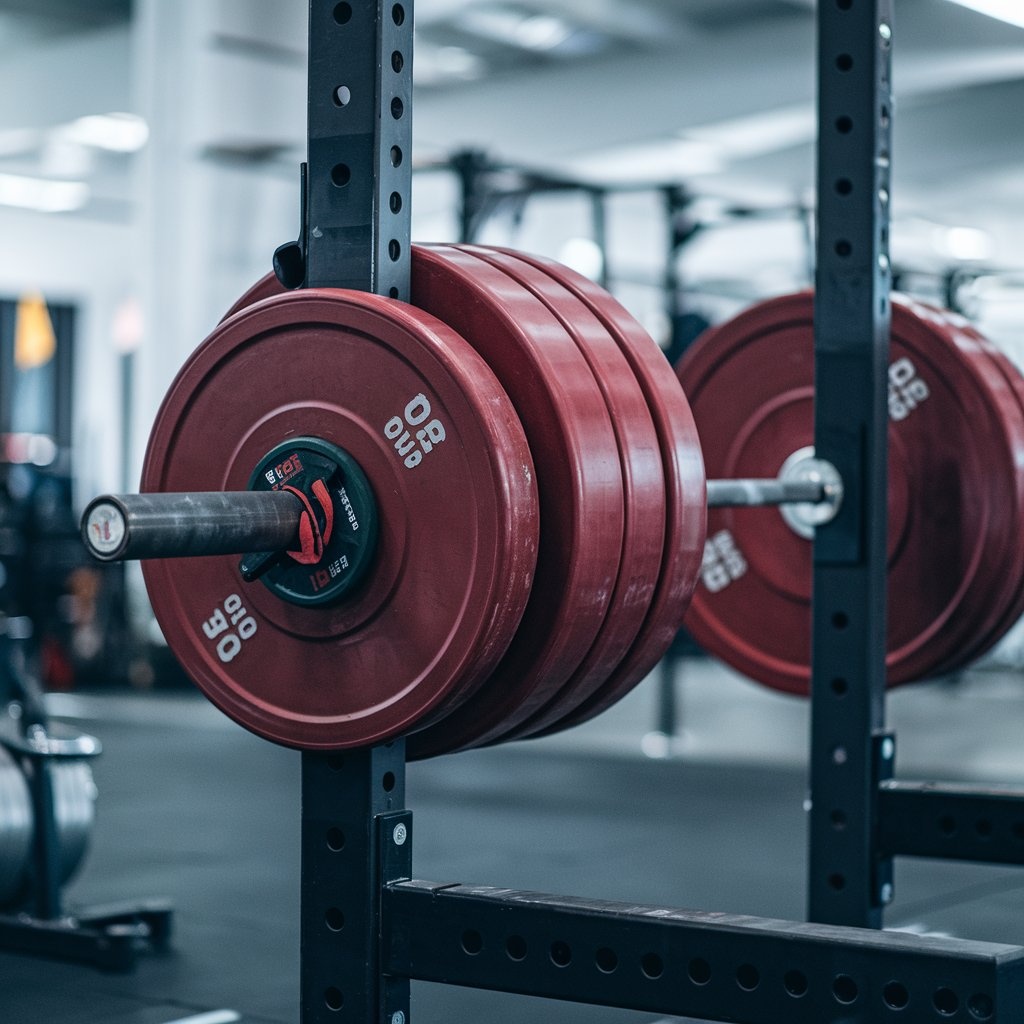RDLs are a type of exercise. They focus on strengthening your back, hips, and leg muscles. Regular deadlifts start from the ground. RDLs begin with the barbell at the hip level. This exercise is great for building strength and improving muscle definition.

Importance of Proper Form
Having the right form is super important when doing RDLs. Proper form prevents injuries. It also guarantees that you are working the appropriate muscles. You must keep your back and shoulders straight. And, you must engage your core the whole time. By maintaining good form, you’ll get the most out of your workout without risking injury.
Overview of Muscle Groups Targeted
When you do barbell RDLs, you target your hamstrings, glutes, and lower back. These muscles are crucial for everyday movements like bending, lifting, and walking. RDLs strengthen them. They improve your stability and cut the injury risk in daily activities. Also, strong hamstrings and glutes can boost performance in sports. These sports include running and jumping.
Proper Setup
Feet Positioning
- Stand with your feet about hip-width apart. This means they should be the same width as your hips.
- Keep your toes pointing slightly outward, about 10 to 15 degrees. This helps with stability and balance.
- Ensure that the two feet are bearing the same amount of your weight.
Grip on the Barbell
- Approach the barbell and stand with your feet under the bar.
- Bend your knees slightly. Grip the barbell with both hands. Hold it slightly wider than shoulder-width. Either an overhand hold, with both palms facing you, or a mixed grip, with one palm facing you and the other facing away, can be used. Use whichever you prefer.
- Don’t overtighten your hold; just keep it solid.
Spine Alignment
- Begin with your back straight and chest up. Assume that you are attempting to extend the length of your spine.
- Throughout the movement, maintain a neutral spine. Avoid arching your back excessively or rounding your lower back.
- Keep your shoulders down and back, keeping your ears apart.
Engaging Core Muscles
- Before you start the movement, take a deep breath and brace your core. Imagine someone is about to punch you in the stomach, and you want to tense up to protect yourself.
- Keep your core engaged throughout the entire exercise. This protects your lower back and helps to stabilize your spine.
- As you lower the barbell, focus on keeping your core tight and your torso stable.
Remember, start with lighter weights to practice the proper form. Then, increase the weight as you become more comfortable and confident. If you’re not sure how to do a certain exercise, think consider seeing a licensed personal trainer. They can ensure you’re doing the movement correctly and safely.
Execution of the Movement
Initiating the Movement
- Hinging at the Hips: Start by standing with your feet about shoulder-width apart. Then, gently push your hips backward as if you’re trying to close a door behind you. This movement should make you feel a stretch in your hamstrings.
- Keeping a Slight Bend in the Knees: While hinging at the hips, it’s important to maintain a slight bend in your knees. This helps to protect your knees and ensures the movement comes from your hips.
Lowering the Barbell
- Maintaining a Straight Back: As you lower the barbell, focus on keeping your back straight. Consider a line that extends from your head to your tailbone. Try to keep that line as straight as possible throughout the movement. This helps to prevent injury and targets the right muscles.
- Feeling the Stretch in the Hamstrings: As you lower the barbell, you should feel a stretch in your hamstrings. This is a good sign. It means you’re doing the movement right and targeting the right muscles.
Ascending with Control
- Driving Hips Forward: Lower the barbell as far as you can with good form. Then, reverse the movement. Once you’re upright again, push your hips forward. This action engages your glutes and helps to bring you back to a standing position.
- Squeezing Glutes at the Top: As you come to a standing position, really squeeze your glutes. This helps to fully engage the muscles and get the most out of the movement. Think about pushing your hips forward. Squeeze your butt at the top.
Start with a lightweight to get the hang of the movement. After that, as you become more comfortable, raise the weight. And always put proper form before heavy lifting.
Common Mistakes to Avoid
- Rounding the Back: This mistake happens when your back curves forward while exercising. It raises the possibility of damage and puts strain on your spine. To avoid this, keep your back straight throughout the movement. Imagine you have a broomstick on your back, and try to maintain contact with it from your head to your tailbone. This helps to keep your spine in a safe position.
- Overarching the Lower Back: The problem is arching, not rounding. Some people arch too much during the RDL. Strain and pain may result from this as well. To prevent this, use your core muscles. Tilt your pelvis forward at the top. This helps to maintain a natural curve in your lower back without exaggerating it.
Using Excessive Weight: You might be tempted to load up the barbell with heavy weights. But, using too much weight can hurt your form and raise the risk of injury. Make sure you use a weight that will allow you to complete the exercise with the correct form. You should be able to control the movement for the whole range. Don’t jerk or swing the weight.
Not Controlling the Descent: Another mistake is not controlling the descent. It happens when the barbell drops too quickly during the lowering phase of the RDL. This reduces the exercise’s effectiveness. It also raises injury risk, especially to your lower back and hamstrings. Instead, maintain control as you lower the weight. Do this by actively using your hamstrings and glutes. Keep a slow and steady pace, feeling the stretch in your muscles as you lower the barbell.
Tips for Improvement
Start with Light Weights
When you’re learning any new exercise, it’s important to start with lighter weights. This helps you get the technique right without putting too much strain on your muscles. Begin with a comfortable weight that allows you to perform the exercise with proper form.

Focus on Mind-Muscle Connection
As you do your RDLs, pay attention to how your muscles feel. Try to focus on the muscles in your hamstrings and glutes working as you hinge at your hips. This link between your mind and muscles can help you do the exercise better. It can also prevent injury.
Utilize Mirrors or Video Feedback
Using a mirror or recording yourself on video can be super helpful for checking your form. Watch yourself as you do the RDLs and look for any mistakes or areas where you can improve. This visual feedback can make a big difference in perfecting your technique.
Incorporate Stretching and Mobility Work
Before you start your RDLs, take some time to stretch your hamstrings and lower back. This helps improve your flexibility and range of motion. It facilitates the proper execution of the exercise. You can also do mobility exercises. These include hip circles or leg swings. They loosen your joints and ready your body for movement.
Benefits of Barbell RDLs
Here’s a simple breakdown of the benefits of Barbell Romanian Deadlifts (RDLs). They’re great for you.
Strengthens the Posterior Chain: They strengthen the back of your body. Barbell RDLs work wonders for those muscles. These are the hamstrings, glutes, and lower back. These muscles are very important. They help with things like standing, walking, and lifting. By doing RDLs, you’re working these muscles. They become stronger as a result, and your movement improves.
Improves Hip Hinge Mechanics: Have you ever heard of a hip hinge? It’s like the movement you make when you bend forward from your hips while keeping your back straight. Doing RDLs helps you get better at this hip hinge movement. It’s not just about strength; it’s about doing it right. The more you practice RDLs, the better you’ll get at doing this move right. It’s handy for everyday stuff and even other exercises.

Increases Muscular Endurance: It increases muscular endurance. It’s about how long muscles can keep going without tiring. When you do RDLs, especially with a barbell, you’re not just building strength. You’re also improving how long your muscles can work. This can be useful in many situations. It’s useful for sports or just for getting through a busy day without feeling tired.
Can Help Prevent Injury: One cool thing about RDLs is that they can help prevent injuries. How? By strengthening those muscles in your back and fixing your hip hinge, you’re making your body tougher. Strong muscles and proper movement cut the risk of injury. This applies to everyday activities and workouts. It’s like giving your body a shield against injuries!
So, there you have it! Barbell RDLs build strength. They also offer many other great benefits. These can make a big difference in your health and fitness.
Conclusion
In wrapping up, it’s key to learn to do barbell Romanian deadlifts (RDLs) right. Doing them right not only keeps you safe but also helps you get the most out of your workout.
First off, nailing the form is key for safety. Keep your back straight. Lift with your legs and hips, not your back. This prevents injuries. Plus, it ensures you’re targeting the right muscles and getting the most out of each rep.
But it’s not just about safety; it’s also about effectiveness. When you do barbell RDLs with good form, you’re working the hamstrings, glutes, and lower back. That means you’re getting stronger and more toned in all the right places.
So, if you haven’t already, think about adding barbell RDLs to your fitness routine. They’re a great way to build strength and muscle, and they can help improve your posture and balance too. Just start light. Focus on your form. With increasing strength, increase the weight.
To sum it all up, proper form is crucial for safe and effective barbell RDLs.Try them out without hesitation to experience the advantages for yourself!

